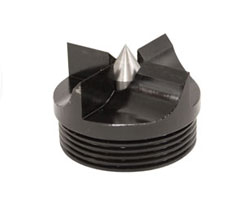I've had the mustard a few months now, and I'm starting to explore the potential for larger work. But I'd rather not kill myself.
So far, up to 20", I've been using the 3.25" faceplate that came with the lathe, along with the tailstock for extra support/safety. I have the bed extension with the longer toolrest post, and I'd like to try turning off the end with it. But without a tailstock, I want to make sure the blank stays attached.
So how big a faceplate do I need, for a 26" blank, for example? The Don Pencil stuff has been recommended, but he doesn't seem to have plates over 3.5" -- any recommendations for a source of good plates in larger sizes? The blanks can easily hit 100 lbs. And how many screws/how long? And is it ever possible to put something like this in a standard chuck? (The last 18+" bowl was 20 lbs when roughing was finished). I assume a talon with #3 won't cut it... ?
Thanks,
Josh





 Reply With Quote
Reply With Quote




 And how do I clean the tenon for re-mounting after it's dry?
And how do I clean the tenon for re-mounting after it's dry?



 ).
). On small bolws I'm satisfied with the "just clamp the chuck tighter" method, but that doesn't seem wise on the big stuff.
On small bolws I'm satisfied with the "just clamp the chuck tighter" method, but that doesn't seem wise on the big stuff.